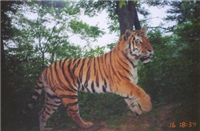
As the leaves change and temps drop, the crisp autumn air brings a whole new load of waste possibilities with the new season. As opposed to the scorching summer months coupled with UV rays that dry lawns and surge kilowatts of electricity through homes for cooling, fall brings gutter clutter and leaf waste – not to mention high kilowatt usage in parts of the world prone to freezing temps.
The U.S. Environmental Protection Agency (EPA) recently announced funding for Great Lakes Restoration Initiative projects in Northern Michigan totaling $1.1 million.
Research suggests soil environment determines humus depletion, which means the question as to how soils respond to global climate change needs to be readdressed.
Changing human activities coupled with a dynamic environment over the past few centuries have caused fluctuating periods of decline and recovery of corals reefs in the Hawaiian Islands, according to a study sponsored in part by the Institute for Ocean Conservation Science at Stony Brook University.

In a new study, UC Santa Barbara scientists explain how they used DNA to identify microbes present in the Gulf of Mexico following the Deepwater Horizon oil spill, and how they identified the microbes responsible for consuming the large amount of natural gas present immediately after the spill.

As the nation heightens security measures across land, air and sea; any proposed tactic in the effort to ward off hostiles is being employed – including an elite team of 75 bottlenose dolphins and 35 California sea lions trained to defend the nation.

Researchers led by MIT professor Daniel Nocera have produced something they’re calling an “artificial leaf”: Like living leaves, the device can turn the energy of sunlight directly into a chemical fuel that can be stored and used later as an energy source.

A team of Russian veterinary colleagues and health experts from the Wildlife Conservation Society's Bronx Zoo are collaborating to understand how distemper -- a virus afflicting domestic dogs and many wildlife species -- may be a growing threat to Siberian (Amur) tigers.
When a species recovers enough to be removed from the federal endangered species list, the public trust doctrine – the principle that government must conserve natural resources for the public good – should guide state management of wildlife, scientists say.
The invasive sea squirt, Styela clava, has now been discovered along the Eastern Seaboard as far south as Bridgeport Harbor and poses a significant danger to Connecticut’s $30 million shellfish business, according to field research conducted by Carmela Cuomo, head of the marine biology program at the University of New Haven, and several of her students.
Coral reefs that have lots of corals and appear healthy may, in fact, be heading toward collapse, according to a study published by the Wildlife Conservation Society and other groups.
A research team led by LSU professors Fernando Galvez and Andrew Whitehead has published the results of a combined field and laboratory study showing the effects of the Deepwater Horizon oil spill on fish living in Louisiana marshes.
The way in which global warming causes many of the world’s organisms to shrink has been revealed by new research from Queen Mary, University of London.
A rapid increase in the frequency of icebergs pounding the shallow seafloor around the West Antarctic Peninsula — as a result of shrinking winter sea ice — has caused the life expectancy of a tiny marine creature to halve over the last 12 years.

A sorghum hybrid that does not flower and accumulates as much as three times the amount of stem and leaf matter may help the bioenergy industry, according to a study appearing in the Proceedings of the National Academy of Sciences.
Predictions of the ground-level pollutant ozone will be more accurate in future according to research published by environment scientists at research centers including the University of Birmingham in the journal Nature Geoscience.
A group of hazardous chemical compounds that are common in industrial processes and personal care products but which are not typically monitored by the Environmental Protection Agency have been detected throughout the Narragansett Bay watershed, according to a URI researcher.
An international team of researchers will begin gathering in the Indian Ocean next month to study how tropical weather brews there and then moves eastward along the equator with reverberating effects around the entire globe. They will use a vast array of tools ranging from aircraft and ships to moorings, radars, and numerical models.
Phase synchronization is a phenomenon in which separate oscillatory systems develop joint coherent behavior by some nonlinear mechanism. First described in 1673 by Dutch scientist Christiaan Huygens, this phenomenon occurs for instance when an applauding audience suddenly starts to clap in unison or when human breathing patterns lock to multiples of the heart beat.

Scientists at Cambridge University are exhibiting a prototype table that demonstrates how biological fuel cells can harness energy from plants.